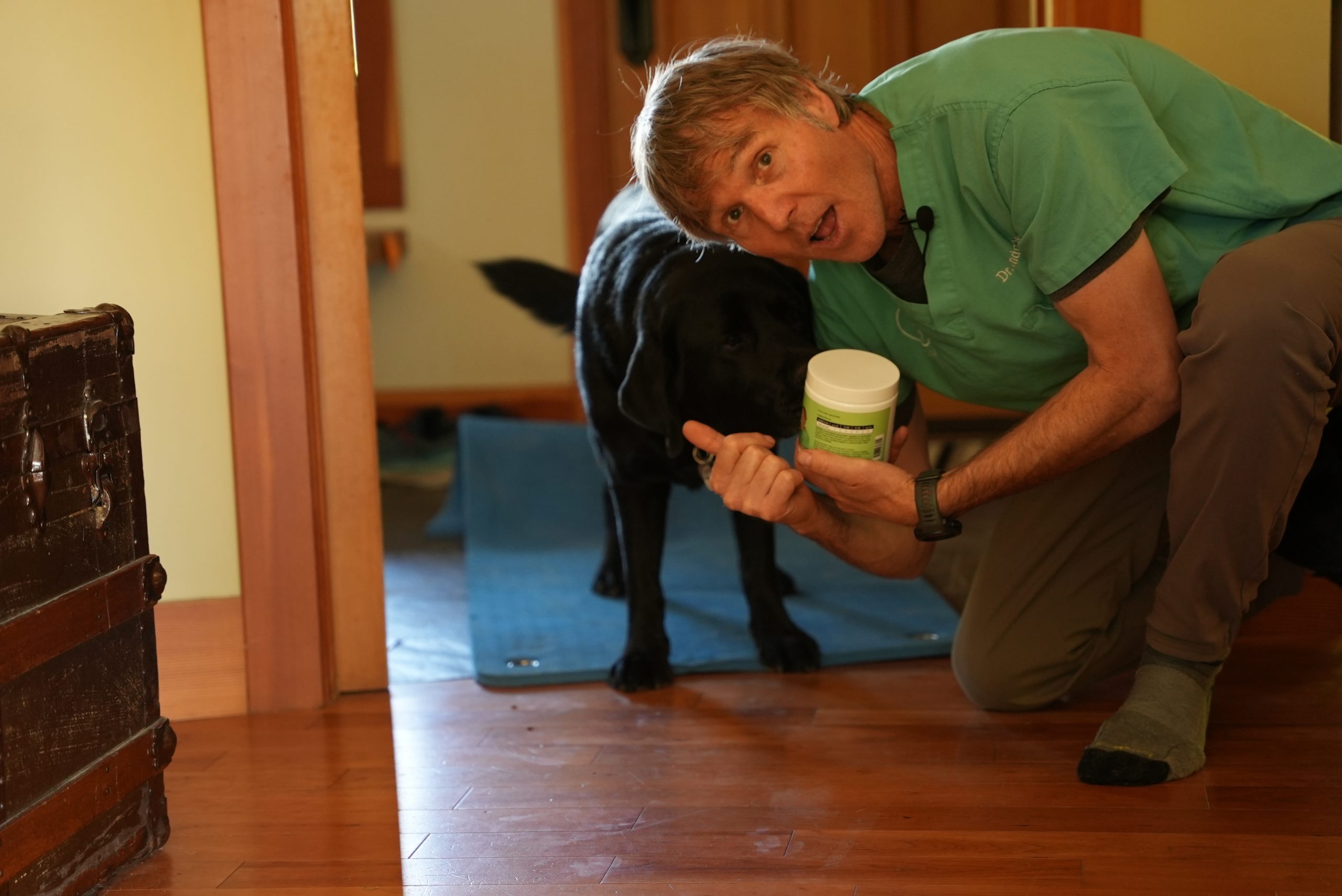Dog Anxiety Remedy: Is Your Dog Terrified of Walking on Hardwood Floors? Try This Now!

Helping Your Dog Overcome Anxiety Around Hardwood Floors
Do you know that there’s a whole range of anxieties that can affect dogs? Some dogs, like my neighbor’s Labrador Angus, can even be scared of something as simple as walking on floors. Today, I’m going to show you what to do if your dog has similar fears, and I’ll also share specific remedies, including supplements that can be really beneficial for dogs dealing with anxiety.
Angus’ Fear of Hardwood Floors
In today’s video, I’m featuring my neighbor’s dogs, Angus and Murdoch. Angus is a big, friendly Labrador, but he has a serious fear of walking on hardwood floors. We’ll break down what’s going on in his mind, and I’ll show you practical steps to help your own dog if they have a similar issue.
When Angus encounters hardwood floors, he’s unsure and hesitant, as if he’s afraid of slipping and falling. Imagine trying to walk on a road covered in ice—his claws come out for stability, but they only make things worse by making him feel even less stable. This type of anxiety is more common in dogs than you might think.
Step 1: Positive Associations with the Floor
Before diving into solutions, let’s first think about the situation from Angus’ point of view. For Angus, the floor feels slippery and unfamiliar. A good first step is to create positive associations. I started by giving Angus some of his favorite treats on the hardwood floor. By feeding him where he feels unsure, we’re building a positive connection to the surface.
Now, let’s get Angus to take a few steps onto the floor. With some encouragement, he starts standing on the hardwood floor. Good boy, Angus!
Step 2: Create a Path with a Safe Surface
To help Angus feel more secure, I placed a yoga mat over the slippery surface. This gives him stability while gradually introducing him to the floor. He feels much safer on this surface, and his claws can grip the mat without slipping. This is a great way to ease him into feeling more confident on the hardwood.
Step 3: Encourage Progress with Treats
The next step involves creating a trail of treats to lead Angus from his safe yoga mat onto the hardwood floor. By encouraging him to take small steps toward his goal and rewarding him for each success, we’re building his confidence bit by bit.
Angus made great progress! At first, he was hesitant, but with a little coaxing and patience, he managed to step onto the floor with two of his front legs. Success!
Step 4: Be Kind, Patient, and Persistent
One key point to remember during any form of dog training is to be kind, patient, and understanding. You don’t want to overwhelm your dog by forcing them into uncomfortable situations, but you also don’t want to coddle them too much. The goal is to find a balance, pushing your dog gently to overcome their fears without overwhelming them.
Encouraging slow movements is crucial. You don’t want your dog to rush in, all excited, and risk slipping. Calmness is key. Angus responded wonderfully to a liver treat and took slow, deliberate steps. His confidence is growing!
Step 5: Trimmed Nails and Toe Grips
A practical tip for dogs with floor anxiety is to keep their nails trimmed. Longer nails can cause more instability on slippery surfaces. You can also consider using products like Dr. Busby’s ToeGrips, which are rubber grips that fit over a dog’s nails to provide better traction.
Angus went from refusing to leave the boot room to walking confidently on the hardwood floor—quite the achievement! While he wasn’t quite ready to tackle the stairs, that’s okay. Progress is progress, and we’re rewarding every step in the right direction.

Supplements for Dog Anxiety
Lastly, I want to mention a few supplements that can be incredibly helpful for managing dog anxiety:
-
CBD Oil: I’ve had great success using CBD for Tula’s anxiety. For dogs, I recommend 1 drop or 3 mg per 10 lbs of body weight, given twice daily. It works best when given 30 to 60 minutes before any anxiety-inducing activity.
-
L-Theanine: This amino acid found in green tea has been shown to reduce anxiety in dogs. It’s something that needs to be given long-term (4+ weeks) before you’ll see results. The recommended dose is 50-100 mg per 10 lbs of body weight daily.
-
Valerian Root Tincture: This is a short-acting herb that can help with anxiety in specific situations, like when visiting a house with slippery floors. The dose is ½ mL per 20 lbs of body weight, 2-3 times daily.
-
Melatonin: Known for its role in promoting sleep, melatonin can also be helpful for anxiety. The dose is 1 mg per 10 lbs of body weight, up to 6 mg twice daily.
-
Dr. Jones’ Complete Canine Calming Chews: This supplement combines L-Theanine, Valerian root, chamomile, passionflower, and melatonin, making it a highly effective long-term solution for anxiety. The dose is 1 chew for every 30 lbs of body weight, given daily.

If your dog suffers from anxiety—whether it’s due to slippery floors or something else—I encourage you to try these behavioral steps and consider some of the supplements I’ve mentioned. Don’t forget to check out my Complete Canine Calming Chews, which combine these powerful ingredients to help reduce anxiety in your dog.
Thank you for watching this edition of Veterinary Secrets! Click up there to subscribe, hit the bell for notifications, and don’t forget to grab a copy of my free book. Special thanks to Angus for being today’s star—you did a great job, buddy!

